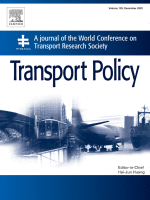
News
Keeping you up to date with all the latest developments in colour vision for aircrew across the world
EASA to review Colour vision requirements in the new full glass cockpit environment and modern ATCO consoles- April 2023
The current colour vision requirements were established more than 20 years ago, and since then, there have been significant advancements in aviation technology, including full glass cockpit and ATM consoles. These advancements have changed the working environment for pilots and ATCOs, and it is necessary to assess whether the current colour vision requirements are still suitable for these modern working environments.
The expected outcome of the project is to provide an updated assessment of the colour vision needs for pilots and ATCOs in modern working environments. This assessment will be based on scientific evidence and will identify any potential changes needed to the current requirements. By providing this evidence, the project will support decision-making with regards to regulatory needs pertaining to colour vision assessment for pilots and ATCOs.
The project aims to ensure that the colour vision requirements for pilots and ATCOs are appropriate for modern working environments and that they are based on the latest scientific evidence. This will help to enhance safety and efficiency in air travel, by ensuring that pilots and ATCOs have the necessary colour vision abilities to perform their duties effectively.
Ultimately, the project will support decision-making with regards to regulatory needs pertaining to colour vision assessment for pilots and ATCOs and help to ensure the safety and efficiency of air travel.
More information can be found here: https://www.easa.europa.eu/en/research-projects/vision?utm_campaign=d-20230426&utm_term=pro&mtm_source=notifications&mtm_medium=email&utm_content=title&mtm_placement=content&mtm_group=easa_research_project
'More fairness' needed in CAA's medical appeals
An Independent Medical Ombudsman is needed to bring fairness into UK CAA’s medical appeals, according to a scientific paper.
The paper was researched and written by Professor David Warnock-Smith of Buckinghamshire New University and an air transport consultant, and Jordan Penning, Operations Controller at Air Charter Service.
“The results revealed compelling evidence that the current CAA process is not as clear, fair, or transparent as it could be with only 21% stating yes to all three elements, lower than views on the currently published CASA and FAA processes, with 83% and 75% supporting them as they are respectively,” says the paper.
Research paper here: https://www.sciencedirect.com/science/article/pii/S0967070X22002736?via%3Dihub#!


New UK Government- Oct 2022
With the new UK Prime Minister Rishi Sunak now in No.10 the cabinet has been reshuffled. The new Secretary of State for Transport now being Mark Harper and Aviation Minister is Baroness Vere. ECDAA will be working closely with these MPs on the objectives set out in our position paper.

Independent review into the CAA- Aug 2022
The government has today (30 August 2022) launched an independent review of the UK’s Civil Aviation Authority (CAA) to ensure the provision of world-leading regulation and public services for decades to come.
With a remit that includes everything from ensuring the highest standards of aviation safety and security, to the efficient use of airspace, space operations and protecting consumer rights, the review will focus on:
-
its efficiency and effectiveness in delivering its services currently, and for the future
-
its role, form, function and delivery model
-
the corporate governance and assurance mechanisms underpinning the organisation
-
the CAA’s relationship with the Department for Transport and how the 2 organisations work together to deliver a quality service for the UK
-
how its priorities match up to the government’s wider objectives, taking into consideration its role as an independent regulator

Written Question in House of Commons- Mar 2022
ECDAA has put forward a formal question in the house of commons for the UK government and Secretary of state for Transport Grant Shapps - To ask the Secretary of State for Transport if he will conduct a review of colour vision regulations for commercial pilots in the UK.
The response is expected by the 17th of March
To view the response, click on the link below:
https://questions-statements.parliament.uk/written-questions/detail/2022-03-10/138096#

DfT to introduce a new independent panel “to strengthen transparency around decision-making and drive forward best practice regulatory processes at the CAA”- Oct 2021
The panel will sit outside of the CAA and will be available to review complaints made by individuals about the process by which the CAA has made decisions that affect them.
“It will be open to individuals whose cases meet a certain threshold if they remain unsatisfied following the CAA’s internal two-stage complaints processes.
“Eligible complaints will cover licensing and certification decisions, such as those following an airspace infringement or the decision to suspend a license or endorsement to an instructor or examiner.
“The panel will consider whether the CAA correctly followed its processes and procedures in arriving at a decision. It will have the power to remit the case back to the CAA where it investigates and considers the CAA has not done this.”
However, the CAA will retain its position as “the ultimate decision-maker”, according to the announcement.
“Therefore in the exceptional event that the CAA chooses not to reconsider a case in which a recommendation to do so from the panel is made, it will need to explain its rationale to the complainant, the panel and the Minister for Aviation,” it continues.
This leads one to question, will this panel be truly independent or will it be just a good publicity point whereby the CAA has the final say on every matter and nothing really is challenged?
Furthermore, it's unlikely this will cover medical which is a major area that needs independent oversight.
https://www.gov.uk/transport/aviation

EASA authorities start to move towards a more restrictive Anomaloscope test - March 2021
From March 2020 some EASA states have decided to move towards the UK pass criteria for the Anomaloscope test, which requires candidates to demonstrate normal trichromacy, meaning to have normal colour vision. Austro Control in March 2021 decided to implement this rule which can be found in the photo to the side. This does not make sense to ECDAA, as secondary testing designed for people who have CVD, is meant to prove 'colour safety' which is by ICAO definition when someone has an acceptable level of colour deficiency. Furthermore, the Anomalosocpe is meant to be the gold standard in testing for severity and type of colour vision deficiency and thus has been used for many decades in testing pilots and people in many other industries. Now with this new Anomaloscope testing criteria, this has meant a reduced number of testing options for CVD candidates, this is unacceptable.

Pilot Career News Article on ECDAA - Jan 2021
A fantastic article on ECDAA has been published on Pilot Career News, this has been a really positive step in advertising ECDAA and making people aware that you can fly with CVD. We look forward to publishing more articles in the future on our progress.
To read the fantastic article written by Jonny one of our panel members, please click the link below:
https://www.pilotcareernews.com/new-group-pushes-for-colour-vision-changes/
New Zealand adopts a fair and practical method of testing CVD Pilots -2019
Under the new rules, pilots with CVD can apply to undertake a new operational colour vision assessment (OCVA) and, if successful, have restrictions removed on their Class 1 and Class 2 medical certificates.
The new approach would include both a medical assessment and practical competency assessment in a three-stage process.
Pilots with the mildest form of CVD, as assessed by clinical testing, would be eligible for unrestricted medical certification in New Zealand.
Those with more severe CVD will still be able to fly with restrictions on their medical certificate that prevents them operating to and from controlled aerodromes without a radio, flying at night or carrying passengers on air operations.
The last two restrictions could be removed by passing a practical operational flight assessment.
For more info click on the link https://www.aviation.govt.nz/licensing-and-certification/medical-certification/colour-vision/
ENAC creates confusion by testing experienced and fully qualified pilots with the CAD Test in their change from EASA Acceptable Means of Compliance -2020
It's mid December 2019 when ENAC (Italian Aviation Authority) with an AltMoC notification (AltMOC MED.B.075) to the European Aviation Safety Agency decided to test pilots with the CAD Test and in the mean time get rid of the Lantern Testing, making them not valid anymore for the issue of a colour safe certification, departing from EASA Acceptable Means of Compliance (AMC). This is something they can do and have the right to do as AMCs are soft law, so not legally binding to member states. The real problems started to emerge when qualified pilots went to Aeromedical Centers (AeMC) to renew/revalidate their Class 1 medical certificate and they were requested to perform CAD Test even if they already were deemed as colour safe based on a Lantern Testing method, lot of these professional aircrews were suddenly deemed as unsafe and have seen they medical certificate revoked after the CAD Test failure even if they had thousands of hours of Instrument Flying experience, luckily with the help of great professionals within the industry and the mediation of EASA, ENAC recognised the problem and issued an Explanatory Note that now gives grandfathered rights to everyone who previously were considered colour safe based on the old regulation (at the date of AltMoC notification), this happened actually pretty fast and the authority was helpful and collaborative towards a positive outcome of the issue. Right now ENAC accepts for new candidates the CAD Test and the Nagel Anomaloscope Test. Even if at the end aviation professionals were kept safe this issue demonstrated, once again, the clear asymmetry between countries in colour vision regulations, the good thing is that EASA is now aware of what could happen in the case of a massive transition to CAD test without clear indications to AMEs (Doctors).
https://www.enac.gov.it/la-normativa/normativa-enac/note-informative/ni-2020-013



